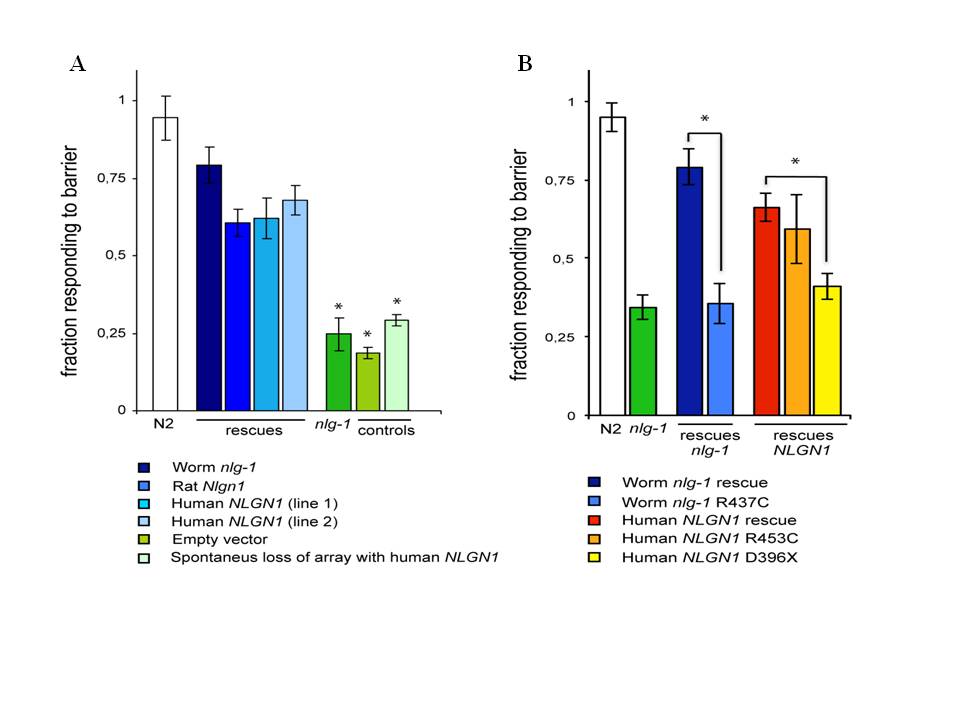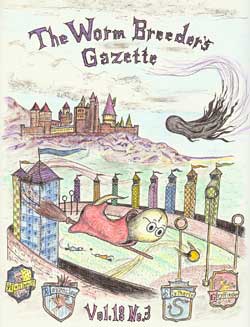To study the interaction of a small molecule with worm ribosomes, we modified a protocol for isolating yeast 80S ribosomes (Algire et al., 2002). N2 worms were cultured in S Medium with E. coli HB101 as described in WormBook (Stiernagle, 2006). Worms were separated from bacteria by sucrose flotation (Portman, 2006). The worms from one liter culture resulted in about 5 mL of pellet. 5 mL of ribosome buffer plus heparin and protease inhibitors (100 mM KOAc, 20 mM HEPES-KOH, pH 7.6, 2.5 mM Mg(OAc)2, 1 mg/mL heparin, 2 mM DTT, 1X protease inhibitor cocktail) were added to resuspend the worm pellet, followed by mechanical homogenization with 0.7mm zirconia beads (BioSpec Products. Inc.). The lysate was centrifuged at 17,000 × g for 30 minutes at 4ºC. The supernatant was transferred to polyallomer Microfuge® tubes and centrifuged at 400,000 × g for 20 minutes at 4ºC. The pellet was resuspened in 1.5 mL of high salt buffer plus heparin and protease inhibitors (100 mM KOAc, 20 mM HEPES-KOH, pH 7.6, 2.5 mM Mg(OAc)2, 1 mg/mL heparin, 500 mM KCl, 2 mM DTT, 1X protease inhibitor cocktail), and the mixture was rocked for 45 minutes. After this high salt wash, the mixture was centrifuged at 20,800 × g for 10 minutes at 4ºC. The supernatant was loaded on the top of a 250 ml of sucrose cushion (100 mM KOAc, 20 mM HEPES-KOH, pH 7.6, 2.5 mM Mg(OAc)2, 500 mM KCl, 1 M sucrose, 2 mM DTT). The mixture was centrifuged again at 400,000 × g for 20 minutes at 4ºC. The ribosome pellet was washed quickly with 500 mL of ribosome storage buffer (100 mM KOAc, 20 mM HEPES-KOH, pH 7.6, 2.5 mM Mg(OAc)2, 1 mg/mL heparin, 2 mM DTT). The pellet was resuspened in 100 ml of ribosome storage buffer plus 2 ml of RNAseOUT®. The mixture was flash frozen in liquid nitrogen and stored at -80ºC. The concentration of 80S ribosome were determined by the absorbance at 260 nm and using extinction coefficients of 5×107 cm-1 M-1 (Algire et al., 2002).
This method provides active worm 80S ribosomes capable of being used in biochemical studies, such as binding experiment with small molecules. We were able to use this method to study the binding of synthetic natural toxins to worm ribosomes isolated from different strains. This method might also be applied to other biochemical studies of worm ribosomes.
[insert_php]
$shortcode_fig1 = do_shortcode( ” );
$shortcode_fig2 = do_shortcode( ” );
$shortcode_fig3 = do_shortcode( ” );
if(!empty($shortcode_fig1) || !empty($shortcode_fig2) || !empty($shortcode_fig3) ){
echo “
Figures
“;
}
if(!empty($shortcode_fig1)){
$html = ”;
$doc = new DOMDocument();
$doc->loadHTML($html);
$xpath = new DOMXPath($doc);
$imgurl = $xpath->evaluate(“string(//img/@src)”);
echo “
“;}
if(!empty($shortcode_fig2)){
echo “
“;}
if(!empty($shortcode_fig3)){
echo “
“;}
[/insert_php]
[insert_php]
$shortcode_content1 = do_shortcode( ‘Algire MA, Maag D, Savio P, Acker MG, et al. (2002). Development and characterization of a reconstituted yeast translation initiation system. RNA 8, 382-397.’ );
$shortcode_content2 = do_shortcode( ‘Stiernagle T. (2006). Maintenance of C. elegans. WormBook, ed. The C. elegans Research Community, WormBook, doi/10.1895/wormbook.1.101.1, http://54.165.141.74/’ );
$shortcode_content3 = do_shortcode( ‘Portman DS. (2006). Profiling C. elegans gene expression with DNA microarrays, WormBook, ed. The C. elegans Research Community, WormBook, doi/10.1895/wormbook.1.104.1, http://54.165.141.74/’ );
$shortcode_content4 = do_shortcode( ” );
$shortcode_content5 = do_shortcode( ” );
if(!empty($shortcode_content1) || !empty($shortcode_content2)){
echo “
References
“;
}
if(!empty($shortcode_content1)){
echo “
Algire MA, Maag D, Savio P, Acker MG, et al. (2002). Development and characterization of a reconstituted yeast translation initiation system. RNA 8, 382-397. PubMed
“;
}
if(!empty($shortcode_content2)){
echo “
Stiernagle T. (2006). Maintenance of C. elegans. WormBook, ed. The C. elegans Research Community, WormBook, doi/10.1895/wormbook.1.101.1, http://54.165.141.74/ PubMed
“;
}
if(!empty($shortcode_content3)){
echo “
Portman DS. (2006). Profiling C. elegans gene expression with DNA microarrays, WormBook, ed. The C. elegans Research Community, WormBook, doi/10.1895/wormbook.1.104.1, http://54.165.141.74/ PubMed
“;
}
if(!empty($shortcode_content4)){
echo “
“;
}
if(!empty($shortcode_content5)){
echo “
“;
}
[/insert_php]
Articles submitted to the Worm Breeder’s Gazette should not be cited in bibliographies. Material contained in the Worm Breeder’s Gazette should be treated as personal communication and should be cited as such only with the consent of the author.






